Abstract
When leaves of a mangrove, Rhizophora mangle, were exposed to an excess of light at chilling temperatures, synthesis of zeaxanthin through violaxanthin de-epoxidation as well as nonphotochemical fluorescence quenching were markedly reduced. The results suggest a protective role of energy dissipation against the adverse effects of high light and chilling temperatures: leaves of R. mangle that had been preilluminated in 2% O2, 0% CO2 at low photon flux density and showed a high level of zeaxanthin, and leaves that had been kept in the dark and contained no zeaxanthin, were both exposed to high light and chilling temperatures (5°C leaf temperature) in air and then held under control conditions in low light in air at 25°C. Measurements of chlorophyll a fluorescence at room temperature showed that the photochemical efficiency of PSII and the yield of maximum fluorescence of the preilluminated leaf recovered completely within 1 to 3 hours under the control conditions. In contrast, the fluorescence responses of the predarkened leaf in high light at 5°C did not recover at all. During a dark/light transient in 2% O2, 0% CO2 in low light at 5°C, nonphotochemical fluorescence quenching increased linearly with an increase in the zeaxanthin content in leaves of R. mangle. In soybean (Glycine max) leaves, which contained a background level of zeaxanthin in the dark, a similar treatment with excess light induced a level of nonphotochemical fluorescence quenching that was not paralleled by an increase in the zeaxanthin content.
Full text
PDF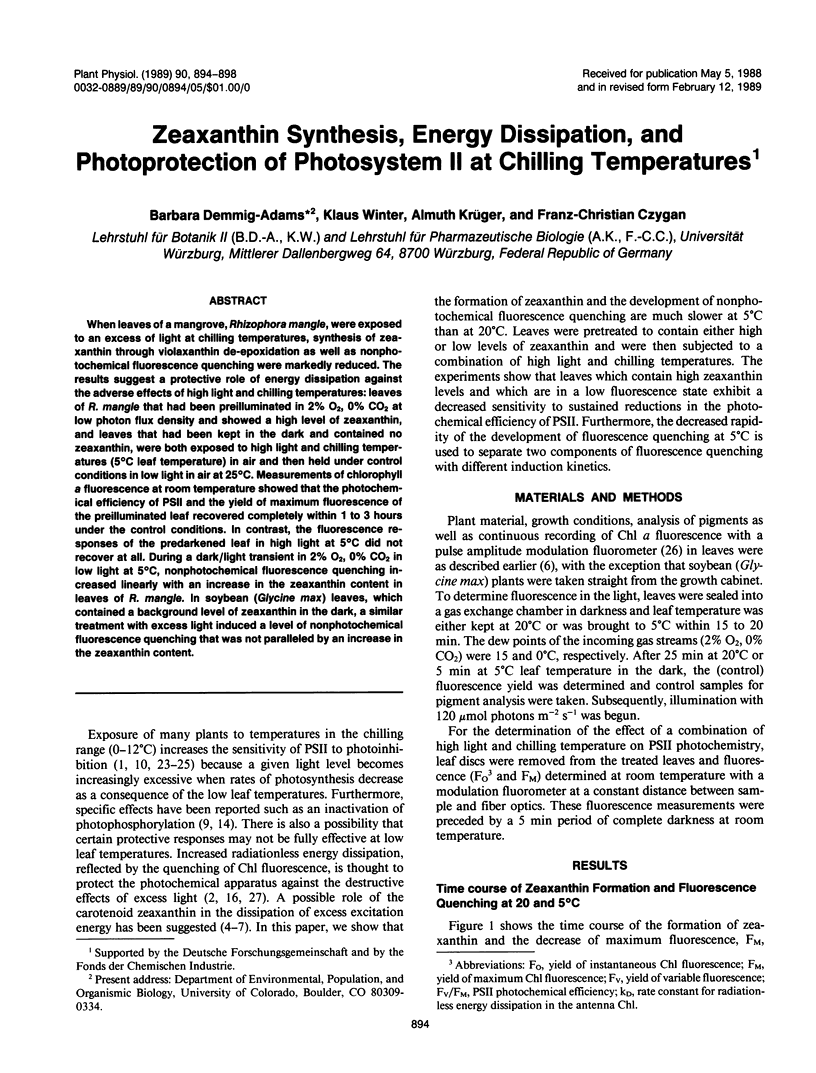
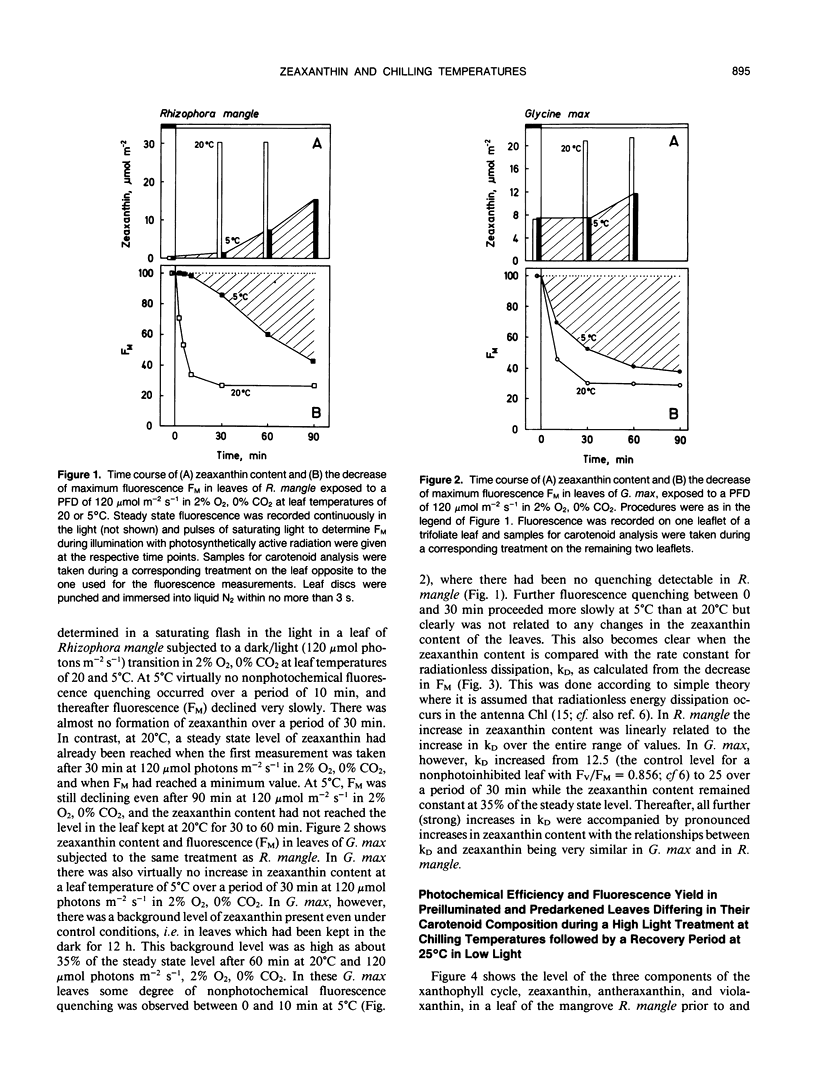
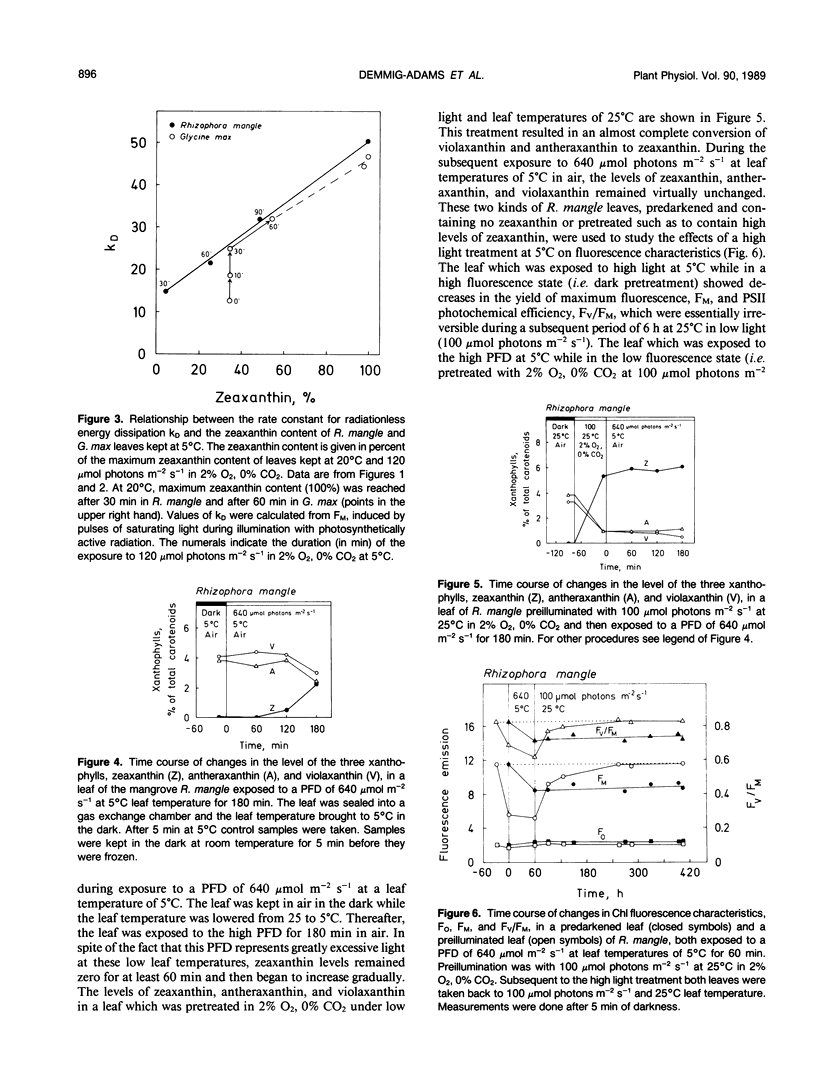
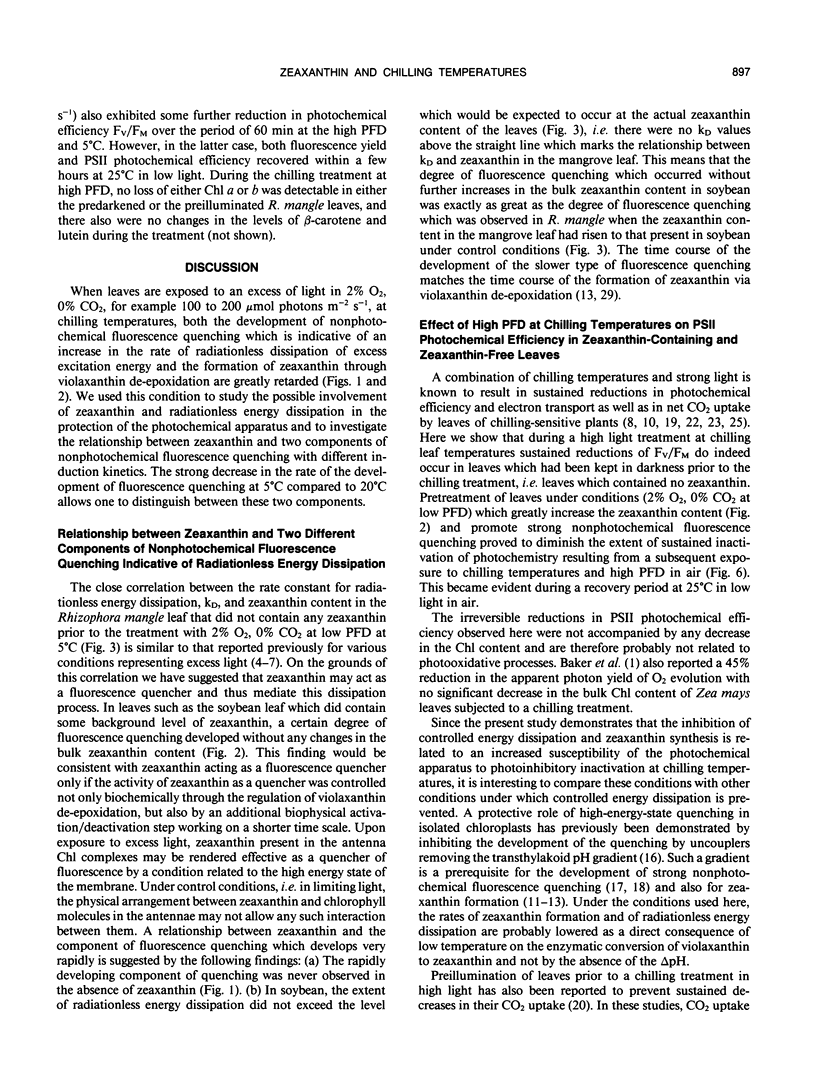
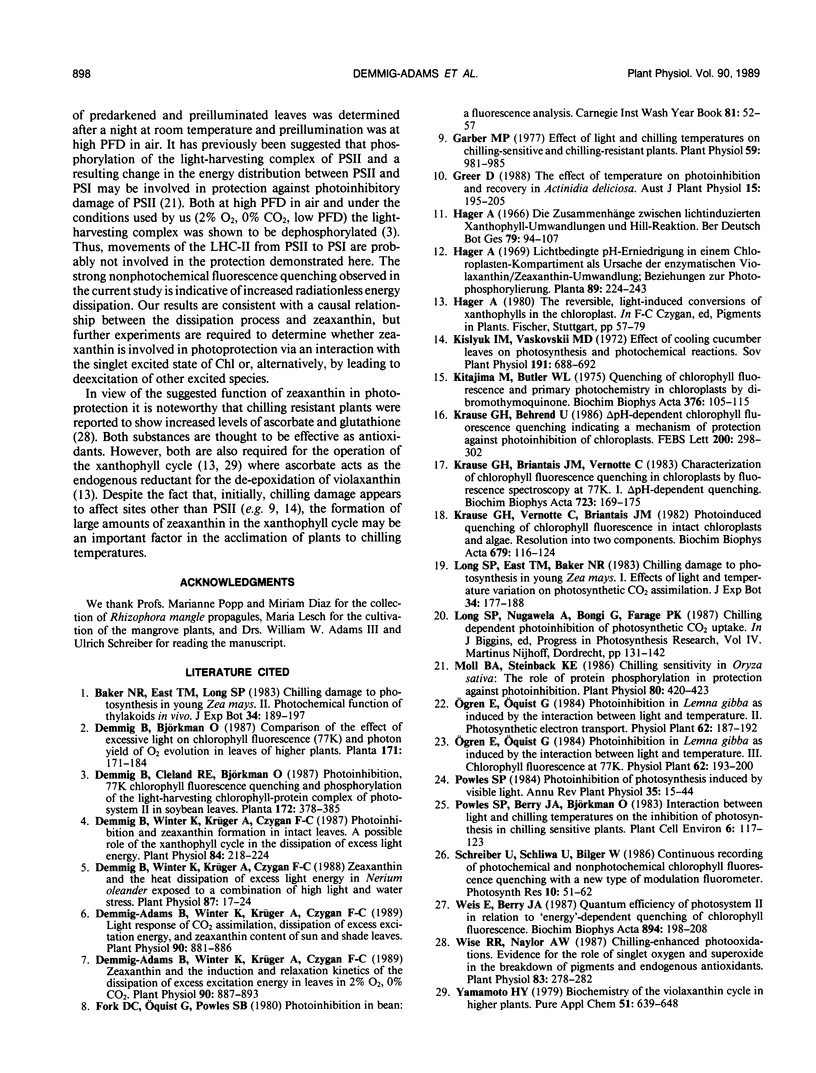
Selected References
These references are in PubMed. This may not be the complete list of references from this article.
- Berry-Opersteny D., Heusinkveld K. B. Prophylactic antiemetics for chemotherapy-associated nausea and vomiting. Cancer Nurs. 1983 Apr;6(2):117–123. [PubMed] [Google Scholar]
- Demmig-Adams B., Winter K., Krüger A., Czygan F. C. Light Response of CO(2) Assimilation, Dissipation of Excess Excitation Energy, and Zeaxanthin Content of Sun and Shade Leaves. Plant Physiol. 1989 Jul;90(3):881–886. doi: 10.1104/pp.90.3.881. [DOI] [PMC free article] [PubMed] [Google Scholar]
- Demmig-Adams B., Winter K., Krüger A., Czygan F. C. Zeaxanthin and the Induction and Relaxation Kinetics of the Dissipation of Excess Excitation Energy in Leaves in 2% O(2), 0% CO(2). Plant Physiol. 1989 Jul;90(3):887–893. doi: 10.1104/pp.90.3.887. [DOI] [PMC free article] [PubMed] [Google Scholar]
- Demmig B., Winter K., Krüger A., Czygan F. C. Photoinhibition and zeaxanthin formation in intact leaves : a possible role of the xanthophyll cycle in the dissipation of excess light energy. Plant Physiol. 1987 Jun;84(2):218–224. doi: 10.1104/pp.84.2.218. [DOI] [PMC free article] [PubMed] [Google Scholar]
- Demmig B., Winter K., Krüger A., Czygan F. C. Zeaxanthin and the Heat Dissipation of Excess Light Energy in Nerium oleander Exposed to a Combination of High Light and Water Stress. Plant Physiol. 1988 May;87(1):17–24. doi: 10.1104/pp.87.1.17. [DOI] [PMC free article] [PubMed] [Google Scholar]
- Garber M. P. Effect of Light and Chilling Temperatures on Chilling-sensitive and Chilling-resistant Plants. Pretreatment of Cucumber and Spinach Thylakoids in Vivo and in Vitro. Plant Physiol. 1977 May;59(5):981–985. doi: 10.1104/pp.59.5.981. [DOI] [PMC free article] [PubMed] [Google Scholar]
- Kitajima M., Butler W. L. Quenching of chlorophyll fluorescence and primary photochemistry in chloroplasts by dibromothymoquinone. Biochim Biophys Acta. 1975 Jan 31;376(1):105–115. doi: 10.1016/0005-2728(75)90209-1. [DOI] [PubMed] [Google Scholar]
- Moll B. A., Steinback K. E. Chilling Sensitivity in Oryza sativa: The Role of Protein Phosphorylation in Protection against Photoinhibition. Plant Physiol. 1986 Feb;80(2):420–423. doi: 10.1104/pp.80.2.420. [DOI] [PMC free article] [PubMed] [Google Scholar]
- Wise R. R., Naylor A. W. Chilling-enhanced photooxidation : evidence for the role of singlet oxygen and superoxide in the breakdown of pigments and endogenous antioxidants. Plant Physiol. 1987 Feb;83(2):278–282. doi: 10.1104/pp.83.2.278. [DOI] [PMC free article] [PubMed] [Google Scholar]


